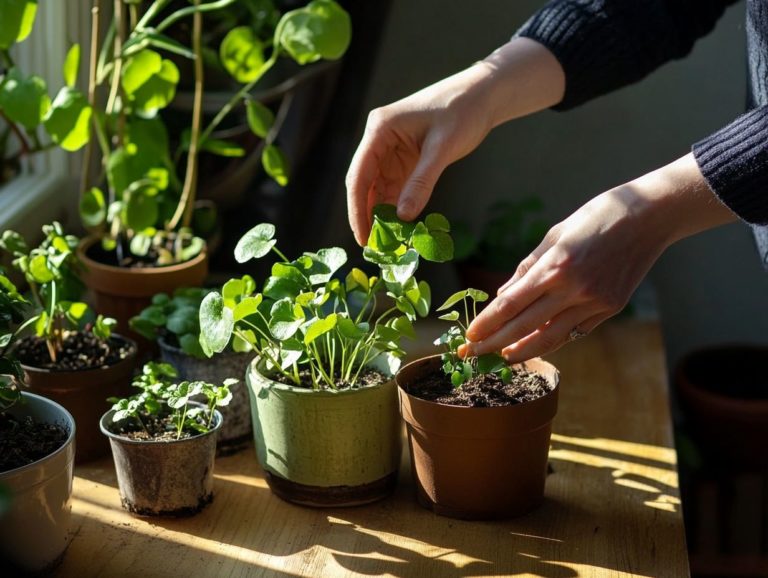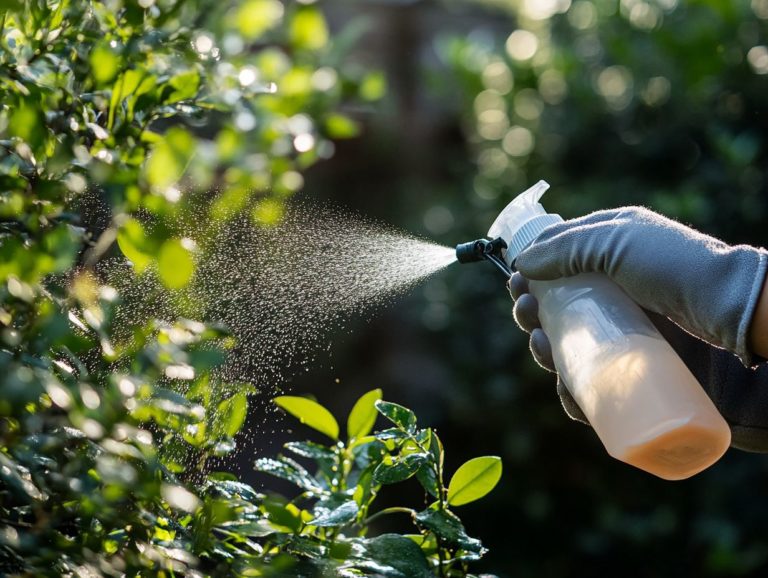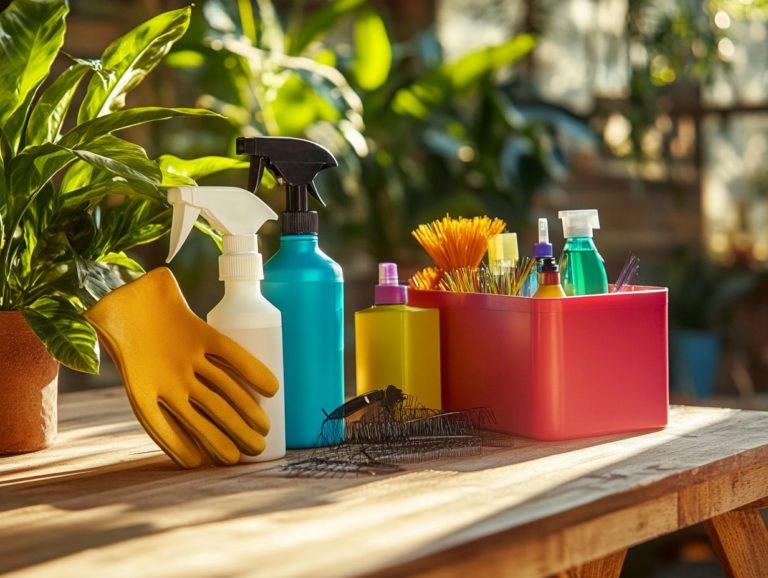Best Practices for Indoor Plant Pest Control
Indoor plants can transform your space into a vibrant sanctuary. However, they may also invite pests.
Pest control is crucial for maintaining the health and beauty of your plants. This guide helps you identify common pests and implement preventive measures.
You ll discover effective strategies for dealing with infestations and tips for a thriving, pest-free environment.
With these insights, your plants can not only survive but truly flourish.
Contents
- Key Takeaways:
- Common Indoor Plant Pests
- Preventive Measures for Indoor Plant Pest Control
- Natural Remedies for Indoor Plant Pest Control
- Dealing with Infestations
- Maintaining a Healthy Indoor Plant Environment
- Frequently Asked Questions
- What are the best practices for indoor plant pest control?
- How often should I inspect my indoor plants for pests?
- What are some natural pest control methods for indoor plants?
- How can I maintain proper sanitation to prevent pests?
- When should I consult a professional for indoor plant pest control?
- Are there any natural ways to prevent pests from infesting my indoor plants?
Key Takeaways:

- Regular pest control is vital for healthy indoor plants.
- Prevention is key: natural remedies and a clean environment help keep pests away.
- If an infestation occurs, effective methods exist to eliminate pests without harsh chemicals.
The Importance of Pest Control for Indoor Plants
Pest control is essential for keeping your indoor plants healthy. It protects them from damages that can hinder their growth.
Taking proactive steps in pest management not only ensures robust plants but also creates a harmonious indoor space.
Healthy plants can purify the air and enhance your home s ambiance, making pest management a vital part of nurturing your indoor ecosystem.
Common Indoor Plant Pests
Indoor plants can attract various pests like aphids, spider mites, mealybugs, scale insects, and fungus gnats. Familiarizing yourself with these pests is essential for effective management.
Identifying these intruders helps you take action quickly and ensure your plants thrive.
Identifying and Understanding Different Types of Pests
Recognizing the different types of pests that can invade indoor plants is key to effective pest management. By knowing the characteristics of common pests, you ll be better equipped to detect and act quickly.
Look for signs like discolored leaves, sticky residue, or webbing. Observing patterns such as wilting or curling leaves can signal trouble.
Using a magnifying lens can help spot smaller pests that may be hard to see with the naked eye.
Preventive Measures for Indoor Plant Pest Control

Implement preventive measures to keep your indoor plants healthy and tackle potential pest issues before they arise.
Establish care routines like monitoring humidity levels and ensuring good air circulation. Using clean pots helps create an environment that is less inviting to pests. Additionally, consider implementing the top 5 natural remedies for houseplant pests to keep your plants healthy.
Tips for Keeping Pests at Bay
To keep pests at bay and ensure the health of your indoor plants, implement practical tips as part of your plant care routine. Regularly examine your plants for signs of pest problems. Properly watering them, applying fertilizer judiciously, and pruning as needed will contribute to a thriving indoor environment.
Establishing a consistent watering schedule tailored to the specific needs of each plant species is essential. After all, overwatering or underwatering can weaken their defenses against pests. To further protect your plants, consider preventing pest infestations in indoor plants by incorporating organic fertilizers every few weeks to supply essential nutrients and promote robust growth, creating a less hospitable environment for unwanted insects.
When it comes to pruning, use sharp, clean tools to remove any dead or yellowing leaves that might attract pests. Understanding the life cycle of common indoor plant pests can also help you prevent infestations. Keep the leaves clean and dust-free to enhance photosynthesis and further bolster your plants’ natural resilience.
Natural Remedies for Indoor Plant Pest Control
Natural remedies provide a refined and sustainable approach to managing indoor plant pests. They allow you to tackle infestations without resorting to harsh chemicals. By employing natural methods, you can protect the health of your beloved plants while effectively addressing pest issues.
Consider options like neem oil, insecticidal soap, and biological controls. These strategies not only combat pests but also safeguard your plants from the dangers of harmful chemicals. For more information on effective pesticides for indoor plant care, explore various methods that can enhance your gardening experience.
Chemical-Free Options for Pest Control
Exploring chemical-free options for pest control greatly enhances the health of your indoor plants. By utilizing products like insecticidal soap and yellow sticky traps for monitoring, you can create a pest-friendly environment without the risks linked to chemical exposure.
These methods protect your plants while promoting a healthier indoor ecosystem. Insecticidal soaps suffocate soft-bodied pests like aphids and spider mites, ensuring that beneficial insects remain unharmed. Introducing biological controls, such as releasing ladybugs, helps establish a balanced environment.
Applying neem oil is another effective technique. It disrupts the life cycle of various pests while being gentle on your plants.
By exploring these innovative techniques, you can cultivate a thriving indoor garden while minimizing the harmful effects of toxic chemicals. For instance, learn how to remove aphids from indoor plants naturally.
Dealing with Infestations
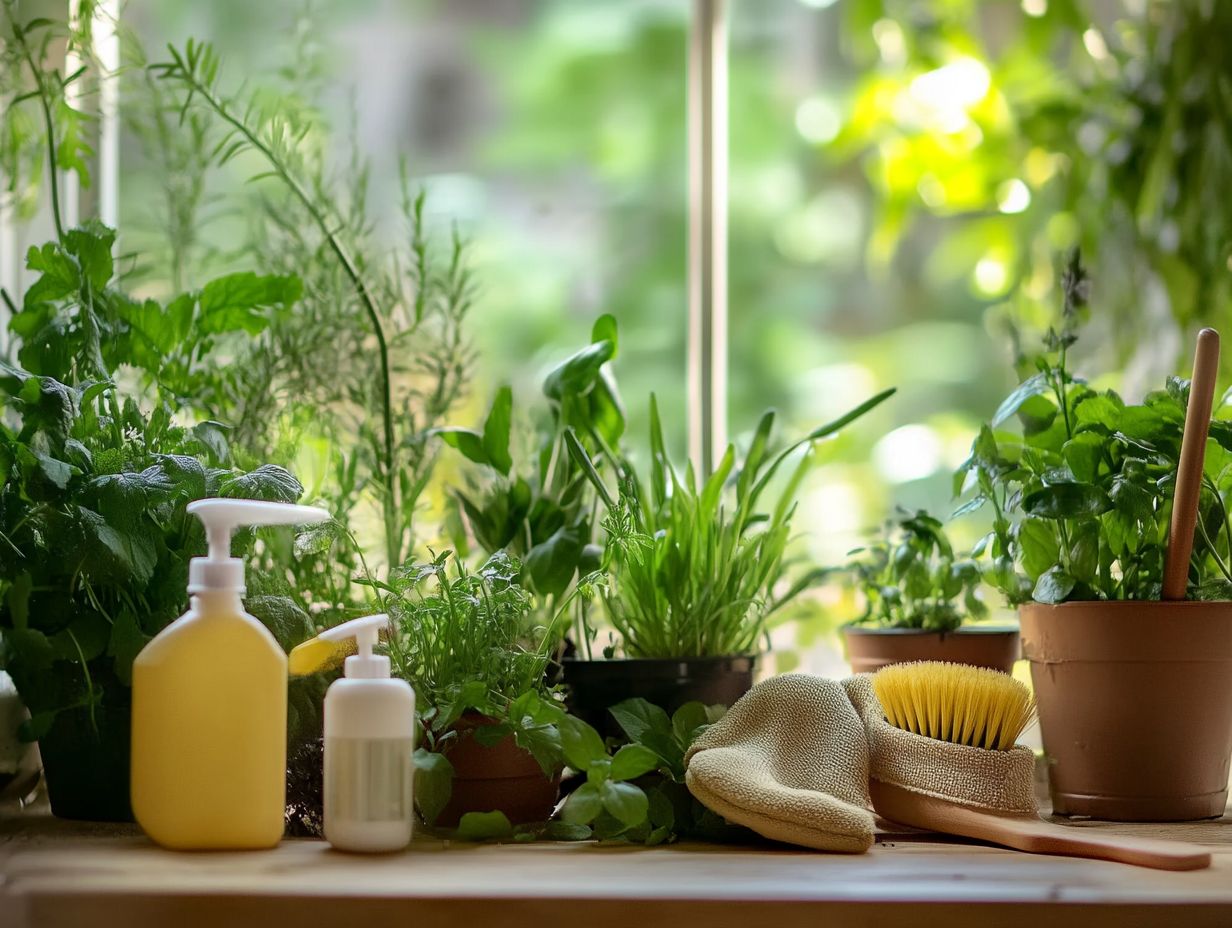
Dealing with pest infestations can feel overwhelming! Mastering effective management techniques significantly reduces plant damage and promotes recovery.
Timely actions, such as quarantining affected plants and addressing root rot, are essential steps in your pest management strategy. To further protect your plants, be aware of the signs your indoor plant has pests. These measures safeguard your plants and foster a healthier environment for their growth.
Effective Methods for Eliminating Pests
Implementing effective methods for eliminating pests is crucial for safeguarding your indoor plants and maintaining their health. Techniques like physical removal, using insecticidal soap, and employing yellow sticky traps are incredibly helpful in managing insects and preventing future infestations.
To complement these methods, consider introducing beneficial insects, such as ladybugs. They create a natural balance in your environment by feeding on pests like aphids. Additionally, understanding how to identify common indoor plant pests can help you inspect your plants regularly to catch any issues early, allowing for timely intervention and significantly reducing the risk of severe damage.
Using a systemic insecticide can provide long-lasting protection. Just be sure to follow the application guidelines meticulously to avoid harming those beneficial species. Additionally, incorporating best practices for indoor plant soil care enhances a multifaceted approach that not only eradicates current pests but also strengthens your plants against future invaders, resulting in a thriving indoor garden.
Maintaining a Healthy Indoor Plant Environment
Creating and maintaining a thriving indoor plant environment is essential for preventing pest issues and fostering robust growth. Pay attention to key factors like monitoring humidity levels, ensuring adequate air circulation, and using clean pots.
Each of these elements plays a vital role in cultivating an atmosphere that supports healthy plants and enhances effective pest management.
How to Prevent Future Pest Infestations
To prevent future pest infestations, adopt proactive strategies. Focus on plant care and diligent monitoring.
Quarantine new plants and clean pots regularly. Observe existing plants closely for any signs of pest trouble.
Maintaining optimal humidity and temperature levels is key. Many pests thrive in unfavorable conditions.
Establish a consistent watering schedule to keep your plants healthy. Healthy plants are less vulnerable to pests.
Using organic insect repellents offers extra protection. Inspect the undersides of leaves to catch potential issues early.
A little vigilance goes a long way. Ensure your green companions remain vibrant and free from pests!
Frequently Asked Questions
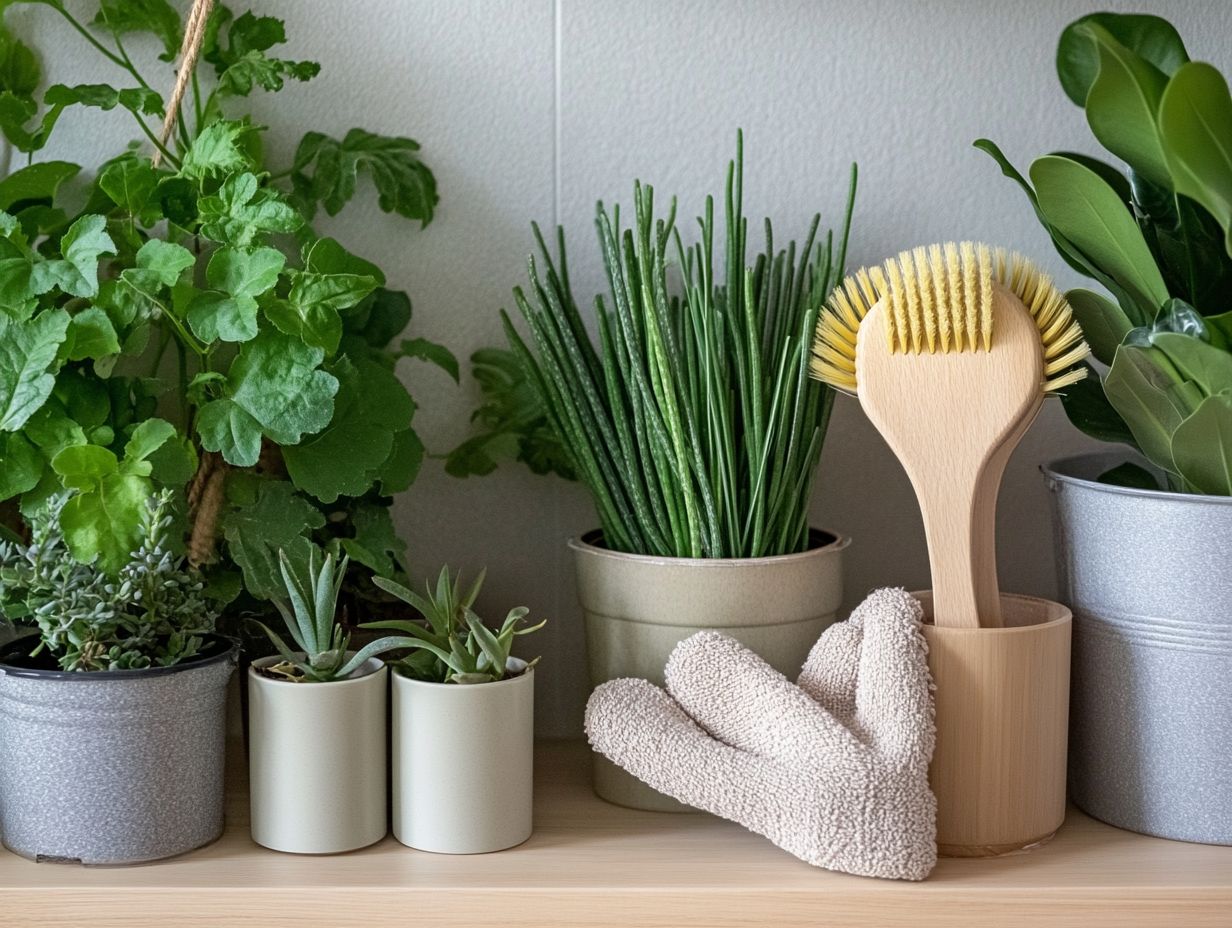
What are the best practices for indoor plant pest control?
Regularly inspect plants for signs of pests. Maintain proper sanitation and use natural pest control methods.
How often should I inspect my indoor plants for pests?
Inspect indoor plants once a week for signs of pests. Doing this helps catch infestations early.
What are some natural pest control methods for indoor plants?
Use neem oil, insecticidal soap, or introduce beneficial insects like ladybugs. These methods can help protect your plants.
How can I maintain proper sanitation to prevent pests?
Regularly remove dead or damaged leaves and debris. Keep the area around your plants clean and clutter-free.
When should I consult a professional for indoor plant pest control?
Consult a professional if you’re unsure about the type of pest or if the infestation is extensive. They can help identify and treat the problem.
Are there any natural ways to prevent pests from infesting my indoor plants?
Yes! Use natural repellents like garlic. Creating a barrier with diatomaceous earth and rotating plants regularly can also help.

